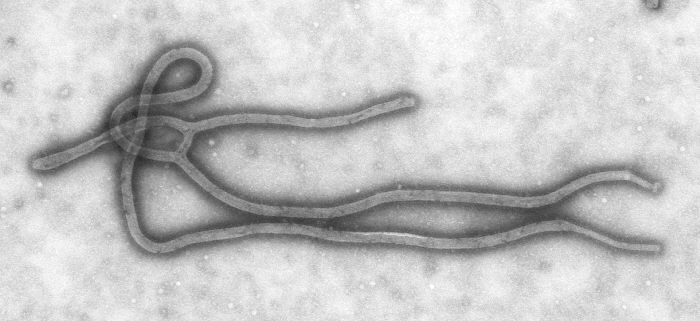-
 Essential amino acids
Essential amino acids
-
 Rachis
Rachis
-
 Transcriptome
Transcriptome
-
 Alevin
Alevin
-
 Lipid-lowering agent
Lipid-lowering agent
-
 Commuting
Commuting
-
 Ephemeris meridian
Ephemeris meridian
-
 Monoclonal antibodies
Monoclonal antibodies
-
 Polysaccharide
Polysaccharide
-
 Acrylamide
Acrylamide
-
 Nymphosis
Nymphosis
-
 Lumen
Lumen
-
 Hydroxyzine
Hydroxyzine
-
 Invadopodia
Invadopodia
-
 Fanconi anaemia
Fanconi anaemia
-
 Proto-oncogene
Proto-oncogene
-
 Drainage basin
Drainage basin
-
 Mount Palomar observatory
Mount Palomar observatory
-
 Spectroheliograph
Spectroheliograph
-
 Frame
Frame
-
 Storage memory
Storage memory
-
 Quantum mechanics
Quantum mechanics
-
 Swallowtail
Swallowtail
-
 Qubit
Qubit
-
 Pathology
Pathology
-
 Position isomerism
Position isomerism
-
 Adsorptivity
Adsorptivity
-
 Global energy balance
Global energy balance
-
 Agenda 21
Agenda 21
-
 Reaction net energy balance
Reaction net energy balance
Ebola Virus
Ebola virus (or Ebolavirus) belongs to the Filoviridae family and is responsible for a serious haemorrhagic fever.
Characteristics of the Ebolavirus
There are four sub-types of the Ebola virus belonging to the Filoviridaefamily:
- Zaire;
- Sudan;
- Ivory Coast;
- and Reston.
Three of the viral sub-types found in the Democratic Republic of Congo (formerly Zaire), the Sudan, and the Ivory Coast are pathogenic to human beings.
TheEbolavirus is a filamentous virus almost 1 micrometre long and 80 nanometres in diameter. It has a large negative polarity RNA genome (which does not code directly) of 18 to 19,000 nucleotide which codes for 7 proteins. The genome bound to proteins is encapsulated by matrix proteins, the layer in which the glycoproteins are anchored.
Ebolavirus and haemorrhagic fever
The Ebola virus is transmitted by direct contact with blood, secretions, organs or biological fluids of infected people. The first cells affected are believed to be mononuclear cells in the phagocytic system. The virus tropism then extends to the epithelial cells, fibroblasts, or hepatocytes through the action of the glycoproteins located on the surface of the viral particles.
The haemorrhagic fever caused by the Ebola virus is fatal in 50% to 90% of patients with clinical features.
 The Ebola virus has a filamentous viral particle. © DR
The Ebola virus has a filamentous viral particle. © DR
Latest
Fill out my online form.



